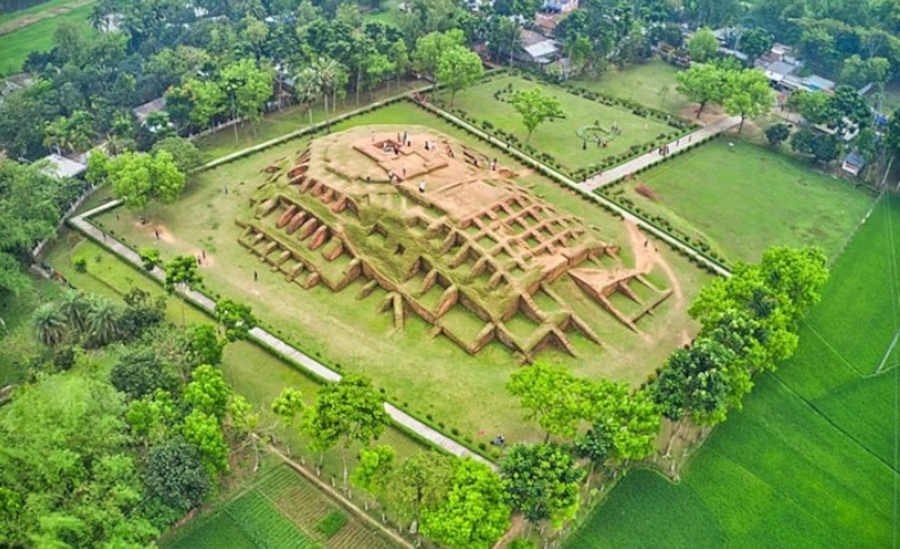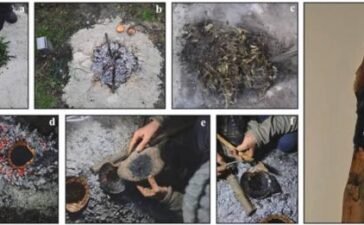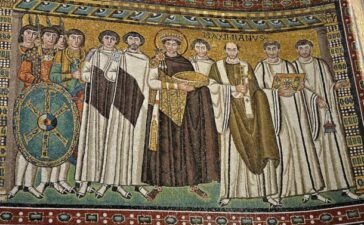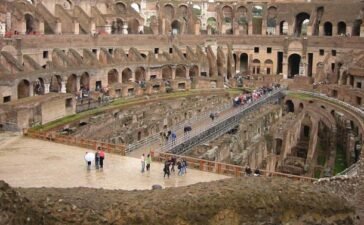The distant past of what is now Bangladesh is often a tricky subject to study. Enigmatic cultures and a turbulent past made it difficult to paint an accurate picture of its history. But some excavated sites greatly helped to break up the mystery and bring us one step closer to a complete picture of Bengal’s past. The archaeological site of Gokul Medh is a great example. It is located in the Bogura District of Bangladesh, and it is a treasure trove of ancient history.
This site, though lesser known compared to other archaeological wonders, holds significant importance in understanding the spread of Buddhism in Bengal and the architectural advancements of the early medieval period. The ruins of Gokul Medh, with their intricate design and historical significance, offer a window into the religious and cultural landscape of the region during a time when Buddhism was flourishing.
Gokul Medh and the Flourishing of Buddhism in the East
This majestic site is also known as Behular Bashor Ghar and is traditionally linked to the legend of Behula and Lakhindar, a popular tale in Bengali folklore. According to the legend, Behula, the devoted wife of Lakhindar, braved numerous trials to bring her husband back to life after he was bitten by a snake on their wedding night. The ruins of Gokul Medh are often associated with the mythical wedding chamber of Lakhindar, although there is no archaeological evidence to substantiate this connection. The legend, however, has played a significant role in popularizing the site among locals.
From an archaeological standpoint, Gokul Medh is believed to date back to the early medieval period, around the 7th to 8th centuries AD. The site is a significant example of a Buddhist vihara, or monastery, which reflects the widespread influence of Buddhism in the region during this era. The Gupta and Pala dynasties, which ruled much of northern India and Bengal during this time, were known for their patronage of Buddhism, and Gokul Medh is a testament to the religious and cultural vibrancy of that period.
The most striking feature of this ancient ruin is its architectural layout. The site consists of a large, rectangular mound that covers about 42,278 square feet (3927.75 sq m), with a height of about 15 feet (4.572 m). The mound is surrounded by a series of terraces and walls, which are believed to have been part of the monastery complex. The central mound is thought to have housed the main shrine or stupa, which would have been the focal point of the monastic community.

Gokul Medh monument in Bangladesh. (Shafiqul Islam Shiplu/CC BY-SA 4.0)
A View of Bengali Past
Excavations at Gokul Medh have revealed the remnants of several structures, including prayer halls, residential cells for monks, and a central courtyard. The walls of these structures are made of bricks, a characteristic feature of early medieval architecture in Bengal. The bricks used in the construction are notable for their size and durability, indicating the advanced state of brick-making technology during this period.
One of the most interesting aspects of Gokul Medh’s architecture is the presence of decorative motifs and sculptures. The walls of the monastery are adorned with terracotta plaques depicting various scenes from Buddhist mythology, as well as floral and geometric designs. These artistic elements provide valuable insights into the aesthetic preferences and religious practices of the time. The terracotta plaques are considered masterpieces of early medieval art and are indicative of the high level of craftsmanship that existed in Bengal during this era.
Due to all this, Gokul Medh holds immense religious significance as a Buddhist site. During the early medieval period, Buddhism was the dominant religion in Bengal, and the region was home to numerous monasteries and stupas. These religious institutions played a crucial role in the spread of Buddhism, not only in Bengal but also in other parts of Southeast Asia. Monasteries like Gokul Medh served as centers of learning, where monks studied and disseminated Buddhist teachings. The site would have been a hub of religious activity, attracting pilgrims and scholars from far and wide.
Alas, the decline of Buddhism in Bengal, which began around the 12th century AD, led to the gradual abandonment of sites like Gokul Medh. The spread of Hinduism and the arrival of Islam in the region contributed to this decline, and many Buddhist monasteries were either converted into Hindu temples or left to decay. Despite this, Gokul Medh remains a vital link to the region’s Buddhist past and continues to be a site of interest for archaeologists and historians.

Excavation was conducted in the site in 1934-36, it revealed ruins of A 42 feet high platform consisting of 172 blind cells. On the flat top of this platform a Buddhist religious establishment (stupa / Mandir) was built in the first construction period (c. 6th-7th AD) (MD Delower Hosain/CC BY-SA 4.0 )
Ingenuity of our Shared Ancestors
Archaeological excavations at Gokul Medh began in the early 20th century, with significant work being carried out in the 1930s and 1960s. These excavations have unearthed numerous artifacts, including pottery, coins, and inscriptions, which have provided valuable information about the site’s history and its role in the religious life of the region. The discovery of these artifacts has helped to confirm the identification of this ancient site as a Buddhist monastery and has shed light on the daily life of the monks who lived there.
Preservation efforts at Gokul Medh have been ongoing, with the site being recognized as a protected monument by the Department of Archaeology of Bangladesh. However, like many archaeological sites in Bangladesh, Gokul Medh faces challenges related to environmental degradation, encroachment, and lack of funding for conservation. These challenges have made it difficult to fully excavate and preserve the site, and much of Gokul Medh remains buried beneath the earth. Despite these obstacles, the site continues to attract visitors and researchers, drawn by its historical significance and the stories embedded in its ruins.
The Archeological Treasure Trove
Without a doubt Gokul Medh is a site of great historical and cultural significance, offering a unique glimpse into the Buddhist heritage of Bengal. Its architectural features, artistic elements, and association with local legends make it a fascinating subject of study for historians and archaeologists alike. Although the site is not as well-known as other archaeological sites in Bangladesh, it plays a crucial role in understanding the region’s early medieval history and the spread of Buddhism in South Asia.
And, as preservation efforts continue, it is hoped that the site will receive the recognition it deserves as a vital part of the cultural heritage of Bangladesh. Through ongoing research and conservation, the secrets of Gokul Medh will continue to be unveiled, enriching our understanding of the past and its impact on the present.
Top image: Gokul Medh or Lakshindar Medh archaeological site. Source: Azim Khan Ronnie/CC BY-SA 4.0
References
Gupta, O. 2006. Encyclopaedia of India, Pakistan, and Bangladesh. Gyan Publishing House.
Prasad, B. N. 2021. Archaeology of Religion in South Asia: Buddhist, Brahmanical and Jaina Religious Centres in Bihar and Bengal, c. AD 600–1200. Taylor & Francis.
Ray, P. H. 2023. The Hindu Temple and Its Sacred Landscape. Simon and Schuster.






